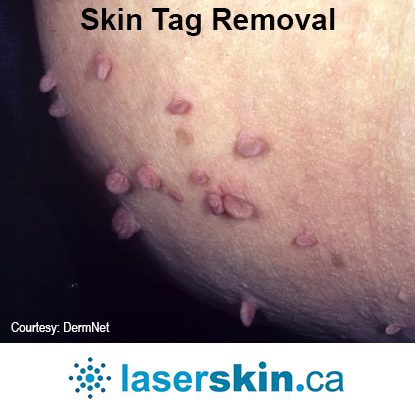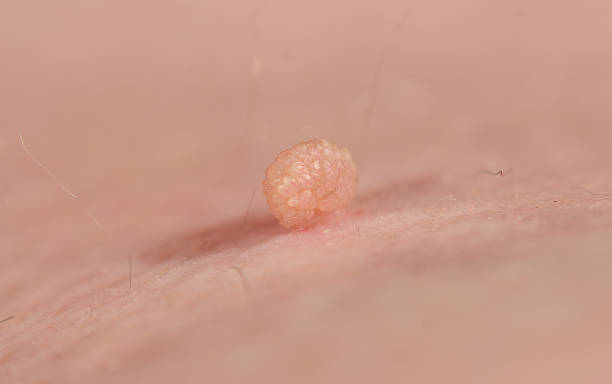
Table of Contents
Skin Tag Remover: A Comprehensive Guide to Skin Tag Removal
Introduction to Skin Tags and Skin Tag Removal
Benign growths known as skin tags can be observed in different areas of the body, such as the neck, armpits, eyelids, and under the breasts. While they are harmless, many individuals choose to remove them for cosmetic reasons or if they cause discomfort. In this article, we will explore skin tags in detail and discuss effective methods of skin tag removal.

What are Skin Tags?
Skin tags, medically known as acrochordons, are soft, flesh-coloured or slightly darker growths that typically hang off the skin. Skin tags are composed of loosely arranged collagen fibers and blood vessels, usually causing no discomfort.
Causes of Skin Tags
Although the specific cause of skin tags is not completely understood, there are certain factors thought to be responsible for their formation. These include friction or rubbing of the skin, hormonal changes, obesity, and genetic predisposition.
Why Remove Skin Tags?
While skin tags are typically benign, individuals often opt for their removal due to cosmetic concerns or if they become bothersome or irritating. Skin tag removal can improve self-confidence and eliminate any potential physical discomfort associated with the growth.
Types of Skin Tag Removers:
There are various options available for skin tag removal, ranging from over-the-counter treatments to professional procedures. Let’s explore some of these methods:
Cryotherapy Kits
Cryotherapy kits utilize extremely cold temperatures to freeze and remove skin tags. They are available for home use and usually contain liquid nitrogen or other freezing agents.
Topical Ointments
Over-the-counter topical ointments containing ingredients like salicylic acid can gradually shrink and remove skin tags. These ointments work by softening the skin tag, causing it to eventually fall off.
Skin Tag Removal Bands
Skin tag removal bands are small bands that are tied around the base of the skin tag, cutting off its blood supply. This leads to the tag eventually falling off.
Professional Skin Tag Removal Options
For more complex or stubborn skin tags, professional removal options are available. These include:
Medical Cryotherapy
Medical cryotherapy involves the application of liquid nitrogen by a healthcare professional to freeze and remove the skin tag.
Surgical Removal
Surgical removal, also known as excision, is a minor surgical procedure where the skin tag is cut off using a scalpel or surgical scissors. This method is often recommended for larger or more difficult-to-reach skin tags.
Electrosurgery/Cauterization
Electrosurgery or cauterization utilizes a high-frequency electrical current to burn off the skin tag. Skin tags of small to medium size can be effectively treated using this method.
Laser Removal
Laser removal is a non-invasive procedure that uses laser technology to target and destroy the skin tag. This method is commonly used for facial skin tags or sensitive areas.
Home Remedies for Skin Tag Removal:
In addition to professional removal methods, several home remedies can be attempted. While these remedies may not have scientific backing, some individuals claim success with them. Here are a few popular options:
Apple Cider Vinegar
Apple cider vinegar is a commonly used home remedy for skin tag removal. It is applied directly to the skin tag using a cotton ball or soaked cotton swab. The acidic properties of apple cider vinegar are believed to gradually shrink and remove the tag.
Tea Tree Oil
Tea tree oil is commonly utilized in natural skincare remedies due to its antimicrobial properties. When applied topically to the skin tag, it may help in drying out and eventually eliminating the growth.
Garlic
Garlic is another home remedy that some individuals use for skin tag removal. Garlic contains enzymes that are thought to possess natural properties capable of breaking down skin tags with regular application. Apply crushed garlic to the tag and cover it with a bandage for several hours each day.
Iodine
Iodine is a common antiseptic that can also be used for skin tag removal. Applying iodine directly to the tag using a cotton swab may help dry it out and promote its gradual disappearance.
Duct Tape
Some people have found success in using duct tape to remove skin tags. The tape is applied tightly over the tag, and over time, it may cause the tag to shrink and fall off.
Tips for Skin Tag Removal:
Maintaining Healthy Skin
Maintaining good overall skin health can help minimize the chances of developing skin tags. This includes regular cleansing, moisturizing, and protecting the skin from excessive friction or irritation.
Avoiding Friction
Avoiding excessive friction or rubbing of the skin can help prevent the formation of skin tags. This can be achieved by wearing loose-fitting clothing and avoiding tight accessories that may create constant friction.
Minimizing Scarring
Complying with the aftercare instructions provided by your healthcare professional is crucial in minimizing the potential for scarring. This may include keeping the area moisturized, avoiding direct sunlight, and refraining from applying harsh chemicals or makeup to the treated area.
Frequently Asked Questions about Skin Tag Removal
What are skin tags, and why do they develop?
Skin tags, medically termed acrochordons, are benign growths that typically develop in areas of the body where the skin folds or encounters friction. These growths consist of loose collagen fibres and blood vessels, and their size can range from a few millimetres to over a centimetre. While the cause of skin tags is not fully known, genetic factors, hormonal changes, and friction or rubbing of the skin are believed to contribute to their formation.
Are skin tag removal bands considered safe to use?
Skin tag removal bands, also known as ligation, involve tying off the base of the skin tag to cut off its blood supply. When utilizing this method, it is crucial to exercise caution and adhere to proper guidelines to reduce the risk of infection or scarring. Consulting with a healthcare professional before attempting this approach is highly recommended.
Are Skin Tags Dangerous?
Skin tags are generally harmless and pose no significant health risks. Seeking professional guidance from a healthcare professional is crucial if you have any concerns about a skin tag or if there are any concerning changes in its appearance.
Will Skin Tags Grow Back After Removal?
In some cases, skin tags may grow back after removal. The likelihood of recurrence varies from person to person. However, with proper removal techniques and preventive measures, the chances of regrowth can be minimized.
How Much Does Skin Tag Removal Cost?
The cost of skin tag removal can vary depending on the method chosen and the healthcare provider. Over-the-counter treatments are generally more affordable, while professional procedures may incur higher costs. Seeking guidance from a healthcare professional or dermatologist is advisable to determine the most suitable and economical approach for your individual case.
What professional procedures are used to remove skin tags?
Cryotherapy: Freezing the skin tag with liquid nitrogen allows for its removal.
Surgical removal: The skin tag is cut off using a scalpel or scissors.
Electrosurgery/Cauterization: High-frequency electrical current or heat is used to burn off the skin tag.
Laser removal: A laser is used to remove the skin tag.
Can skin tags be prevented? Are there any preventive measures?
Although complete prevention of skin tag formation may not be within your control, there are preventive measures that can potentially lower the risk. These include maintaining healthy skin, avoiding friction or rubbing of the skin, and keeping the affected areas clean and dry.
Conclusion
Skin tag removal is a personal decision influenced by various factors such as the size, location, and number of skin tags, as well as individual preferences. Whether you opt for at-home remedies or professional procedures, it’s important to consider safety, effectiveness, and potential risks. Consulting with a healthcare professional or dermatologist can provide valuable guidance in making an informed decision about the best skin tag remover for your specific needs.
Remember, the key to successful skin tag removal lies in proper diagnosis, appropriate treatment methods, and diligent aftercare. It’s essential to approach skin tag removal with caution and follow recommended guidelines to ensure the best possible outcome.
By understanding the causes of skin tags, the available removal options, and preventive measures, you can take proactive steps towards maintaining healthy and blemish-free skin.
